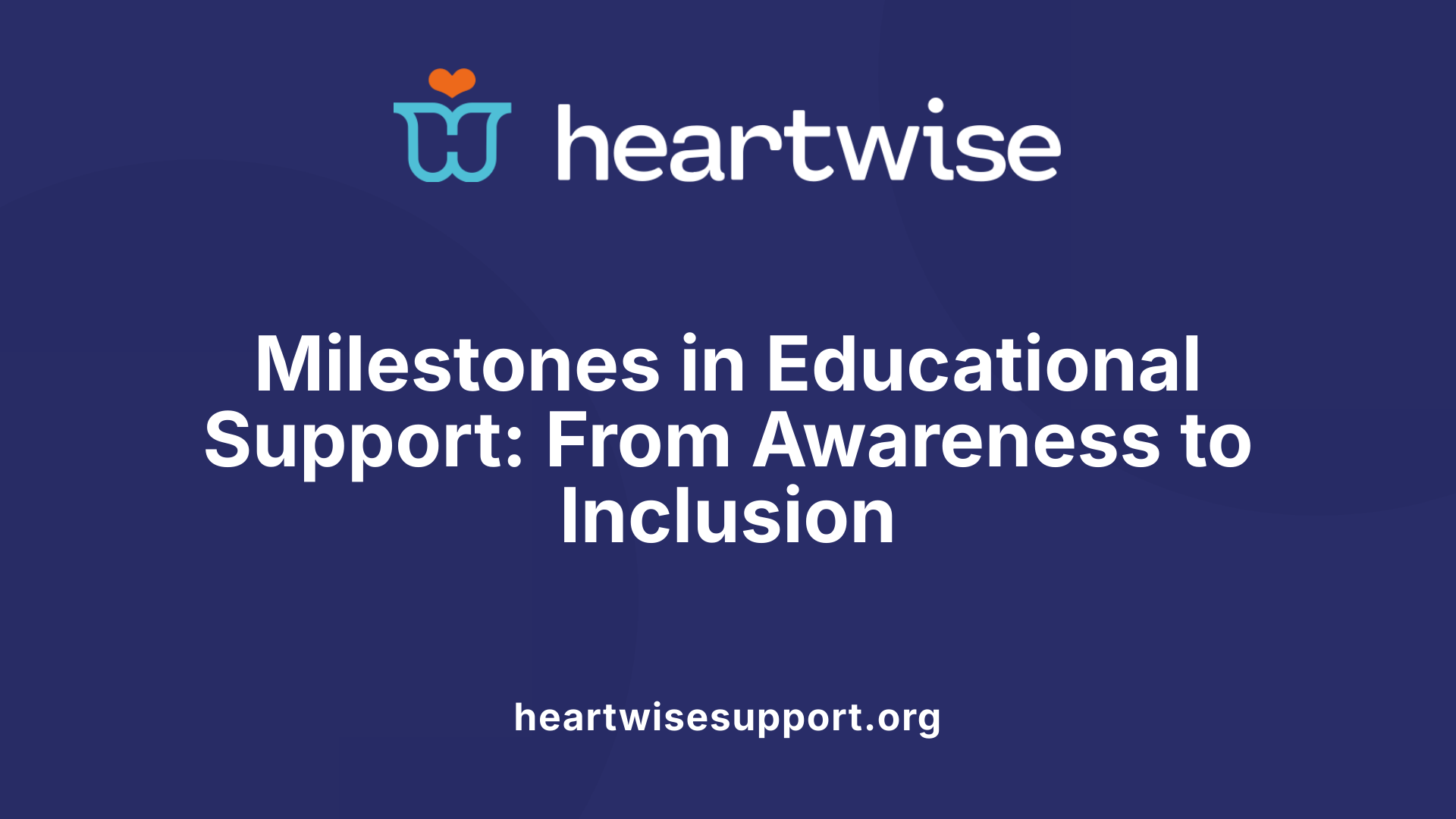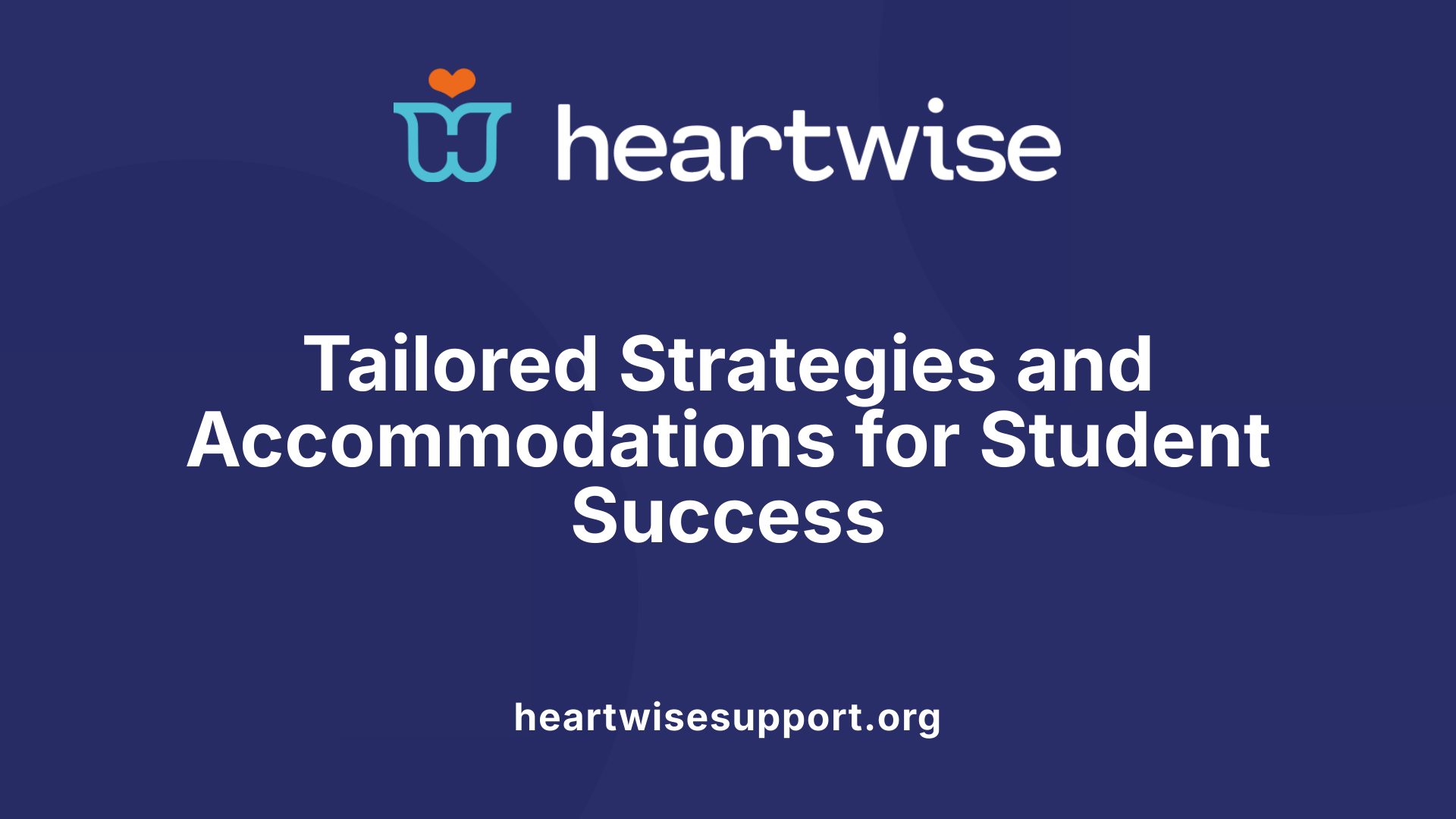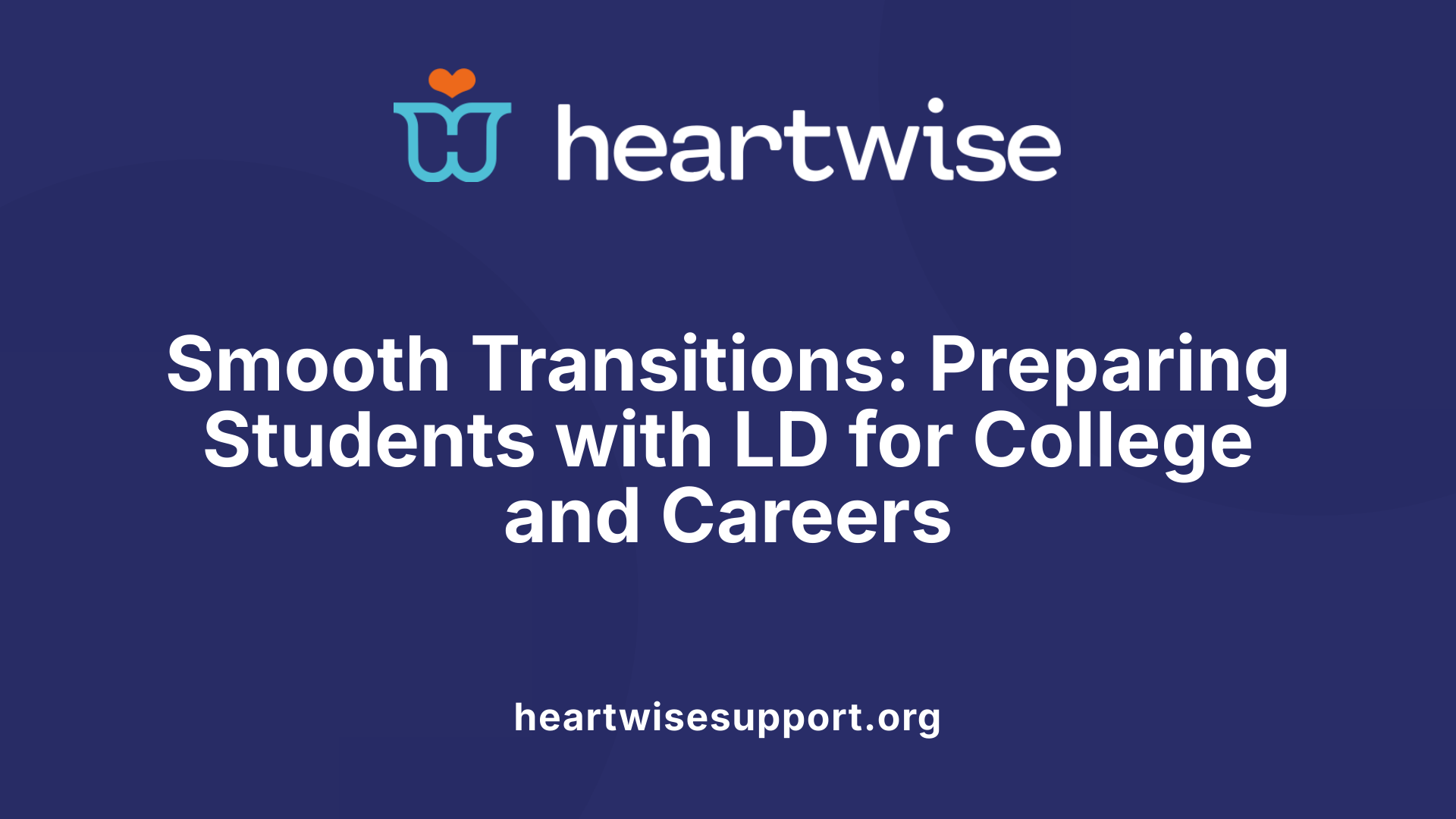Understanding the Framework of Educational Support for Students with Learning Disabilities
Educational support programs are essential in creating equitable, inclusive, and effective learning environments for students with learning disabilities. These programs integrate evidence-based strategies, assistive technologies, and collaborative approaches to help students reach their full potential academically, socially, and emotionally. This article explores the critical components of these programs, highlighting policies, practices, and innovations that promote access, equity, and success.
The Foundations of Effective Educational Support Programs

Why are specialized policies and best practices important for supporting students with learning disabilities?
Supporting students with learning disabilities (LD) requires a well-structured approach grounded in comprehensive policies and best practices. These frameworks provide the foundation for equitable education, ensuring that each student receives tailored support to succeed academically, socially, and emotionally.
Effective policies emphasize early identification through universal screening and continuous assessment. They ensure that interventions are timely and based on evidence, helping students overcome specific learning challenges such as dyslexia, dyscalculia, or perceptual disabilities.
Best practices include explicit, systematic instruction, which uses multisensory methods like phonological awareness training for reading or tactile and visual aids for math. Differentiated instruction allows teachers to adjust content, process, and products based on students' individual needs. These strategies help students engage with grade-level standards while accommodating their unique learning profiles.
Moreover, collaboration among general and special education teachers, specialists, families, and students themselves fosters an inclusive environment. This team effort promotes shared goals, consistent communication, and coordinated support plans, such as Individualized Education Plans (IEPs).
Regular progress monitoring and data-based decisions are crucial for refining interventions. They allow educators to identify what works, adjust instruction, and establish whether students are meeting their targets. Such responsiveness helps prevent students from falling behind and encourages continual growth.
Research supports that when policies align with evidence-based practices, students are more likely to develop skills, improve self-esteem, and make meaningful academic gains. Ultimately, these structured approaches create a supportive system that respects students' rights and promotes their full participation in inclusive classrooms.
Milestones in supporting students with LD
Implementing successful educational programs involves reaching several milestones:
- Raising awareness to dispel myths and promote understanding.
- Fostering a growth mindset to boost motivation and resilience.
- Securing sufficient funding for early intervention and specialized services.
- Preparing teachers with evidence-based instructional strategies.
- Employing universal screening for early support.
- Utilizing evidence-based interventions tailored to individual needs.
- Making data-based decisions to guide instruction.
- Ensuring most students with LD are educated in regular classrooms.
- Providing accommodations and specialized materials.
- Systematic review and adjustment of programs based on progress data.
- Promoting social acceptance and positive school climate.
Principles of successful support programs
Support programs should be explicit, individualized, comprehensive, and flexible. They must recognize that students with LD often need a continuum of placements, including regular classrooms with supports, resource rooms, or specialized settings.
Interventions should be targeted towards specific cognitive or academic deficits, such as phonological processing or numerical cognition, and delivered in a manner that matches students’ learning styles.
Technology also plays a vital role, with assistive tools like speech-to-text, audiobooks, and graphic organizers enhancing access and engagement.
In addition, teacher preparation is essential. Ongoing training on inclusive practices, assistive technology, and strategies for addressing diverse needs ensures that educators can implement effective supports.
The importance of early intervention and ongoing assessment
Early intervention, especially before or during early elementary years, has been shown to be twice as effective as later support. Identifying at-risk students through universal screening allows educators to provide targeted support before difficulties become entrenched.
For sustained success, continuous assessment through formative and summative measures ensures that interventions are effective and adjusted accordingly. This process supports a proactive educational environment that responds to changing student needs.
Principles underlying educational programs
Educational support for students with LD is built on principles such as explicit instruction, differentiation, collaboration, data-driven decision-making, and fostering strengths-based development. These principles guide the creation of inclusive, effective, and adaptive learning environments.
Implementing these principles ensures that students with learning disabilities are not merely accommodated but are actively supported to excel within the general education setting, ultimately promoting equity and high expectations for all learners.
Key Strategies and Accommodations in Educational Support

What are the key strategies and accommodations provided by educational support programs for students with learning disabilities?
Educational support programs for students with learning disabilities utilize a variety of targeted strategies and accommodations to foster academic success and promote an inclusive learning environment. These approaches are carefully tailored to meet individual student needs, ensuring that each student can access the curriculum effectively.
One of the foundational elements is the development of personalized learning plans. These plans explicitly address each student’s unique learning profile, outlining specific goals, necessary accommodations, and support strategies. The goal is to create an individualized roadmap that guides instructional decisions and resource allocation.
Assistive technologies play a vital role in supporting students. Examples include speech-to-text software like Dragon NaturallySpeaking, audiobooks available through platforms such as Learning Ally, and graphic organizers like Inspiration. These tools help students overcome barriers related to reading, writing, and organization. Embedding assistive technology within instruction, along with proper training, maximizes their effectiveness.
Classroom accommodations are designed to provide equitable access to assessments and classroom activities. Common accommodations include extended test time, access to quiet testing environments, and visual supports such as graphic organizers or highlighting key vocabulary. These modifications enable students to demonstrate their knowledge without altering the curriculum's core expectations.
Curriculum modifications involve adjustments to the content or the complexity of assignments. This might include shortening reading passages, reducing the number of items in an assignment, or changing the reading level of instructional materials. Such modifications help students engage with meaningful content at a suitable level while still progressing academically.
Support services encompass a broader spectrum of interventions, including speech and language therapy, counseling, peer tutoring, and social-emotional support programs. These services address developmental, emotional, and behavioral aspects that can impact learning.
Implementing these strategies is underpinned by ongoing assessment and data collection. Regular monitoring of student progress allows educators to refine supports, making necessary adjustments to instruction and accommodations. This dynamic process ensures that interventions stay aligned with student needs and promote continuous growth.
Collaboration among general and special education teachers is crucial. Co-planning, co-teaching, and shared assessment practices help create a cohesive support system. Open communication between educators, families, and students fosters a partnership focused on the student’s holistic development.
Creating a positive classroom climate that promotes social acceptance and reduces stigma is also essential. Implementing programs like Positive Behavioral Interventions and Supports (PBIS) encourages prosocial behavior, decreases disciplinary issues, and supports students' emotional well-being.
In conclusion, effective educational support for students with learning disabilities combines personalized instructional strategies, assistive technologies, accommodations, curriculum modifications, and comprehensive support services. These combined efforts aim to remove barriers, promote inclusion, and ensure that all students have equitable access to high-quality education.
Collaborative and Multidisciplinary Approaches to Support
How can educators collaborate and employ multidisciplinary approaches to support students with learning disabilities?
Supporting students with learning disabilities requires a coordinated effort that draws on the expertise of a range of professionals. One effective strategy is forming multidisciplinary teams that include general education teachers, special educators, school counselors, mental health professionals, and family members. These teams work together to develop and implement tailored support plans that meet each student's unique cognitive, emotional, social, and academic needs.
Structured co-planning and co-teaching models are vital components of successful collaboration. When educators share planning time and classroom responsibilities, they can design lessons more accessible to students with learning disabilities. Clear roles, shared goals, and ongoing communication during these collaborative efforts enhance instructional effectiveness. Engaging students in small, diverse groups with well-defined roles further fosters peer support and inclusive participation.
Frameworks like Multi-Tiered Systems of Support (MTSS) provide an organized structure for delivering layered interventions. MTSS emphasizes universal screening to identify learners early, followed by targeted support at increasing levels of intensity. Integrating the MTSS framework with a Collaborative Care (CC) model, which aligns mental health services with educational supports, promotes holistic student wellbeing and consistent intervention strategies across school staff.
Moreover, fostering interdisciplinary research and developing inclusive policies help establish a foundation for equitable support. These policies should incentivize ongoing professional development, facilitate resource sharing, and prioritize data collection to monitor progress and refine practices. By aligning efforts across disciplines, schools can ensure that students with learning disabilities receive comprehensive, coordinated care that promotes both academic achievement and emotional resilience.
Supporting a Holistic Support System
In practice, these strategies are complemented by partnerships with external agencies, community organizations, and healthcare providers. Consistent communication and shared data among these stakeholders uphold the integrity of a student's support network. Additionally, emphasizing a strengths-based perspective highlights individual talents, fostering positive self-identity and motivation.
A long-term investment in interdisciplinary collaboration and inclusive policy development not only enhances immediate educational outcomes but also supports students’ transition into postsecondary education or the workforce. These approaches demonstrate a commitment to comprehensive, equitable support systems that respect the diverse needs of learners with disabilities.
Promoting Access and Equity within Educational Support Systems
How do educational support programs promote access and equity in education for students with learning disabilities?
Educational support programs are designed to ensure that all students, regardless of their individual learning challenges, have equitable access to quality education. For students with learning disabilities, these programs focus on providing personalized accommodations and assistive technologies that remove barriers to learning.
One of the core strategies involves tailoring instructional methods using evidence-based interventions. These interventions are often guided by comprehensive assessments and data collection, enabling educators to target specific cognitive and academic needs—such as phonological processing difficulties in reading or numerical networks in math.
Inclusive classrooms play a vital role in promoting equity. Culturally responsive teaching practices create a respectful and supportive environment where students from diverse backgrounds see themselves reflected and valued. This approach aligns with the goal of fostering a positive self-image and encouraging participation.
Support strategies like the use of assistive technology—such as speech-to-text programs, audiobooks, or graphic organizers—empower students to access the curriculum effectively. Assistive tools not only facilitate learning but also help students develop independence and confidence.
Implementing targeted interventions based on ongoing assessments ensures that support is responsive and dynamic. Schools frequently utilize models like Response to Intervention (RTI) to clarify student needs early and adjust instruction accordingly, preventing academic failure and closing achievement gaps.
Professional development for educators enhances their ability to serve diverse learners. Training teachers on inclusive practices, disability-specific strategies, and the use of assistive technology improves classroom support and reduces disparities.
Efforts to reduce achievement gaps are complemented by fostering a school culture that celebrates diversity and promotes social acceptance. Equitable education involves addressing stigmas, promoting peer awareness, and creating an environment where students with learning disabilities can thrive both academically and socially.
Over time, these initiatives help diminish disparities between students with disabilities and their peers. The ultimate goal is to provide these students with opportunities to reach their full potential, contributing to their academic success, social integration, and emotional well-being.
| Support Type | Description | Impact |
|---|---|---|
| Accommodations | Changes in how students access or demonstrate learning | Renders assessments and classroom activities accessible |
| Assistive Technology | Tools like speech-to-text, audiobooks, graphic organizers | Facilitates independent learning and skill development |
| Data-driven Interventions | Tailored strategies based on assessment results | Enhances effectiveness and targets specific needs |
| Inclusive Teaching Practices | Culturally responsive teaching, differentiated instruction | Promotes engagement and reduces stigma |
| Professional Development | Training for educators on disability inclusion | Improves classroom support and implementation |
More About Promoting Access and Equity in Education for Students with Learning Disabilities
Research consistently supports that effective educational programs for students with learning disabilities are explicit, individualized, and adaptable. They incorporate a continuum of placements and support mechanisms, including regular classrooms enhanced with specialized strategies.
Early intervention remains crucial, with research indicating that beginning support in grades 1 or 2 can double the likelihood of positive outcomes. These programs often involve collaboration among general and special educators, families, and related service providers.
Embedding assistive technology and differentiated instruction within the curriculum fosters an environment where students with disabilities can access grade-level content while also developing necessary skills. This approach aligns with the principles of inclusive education, emphasizing participation and equal opportunity.
Efforts to bridge achievement gaps also involve addressing social and emotional needs, promoting peer acceptance, and ensuring physical accessibility. These components collectively form the foundation for equitable educational support systems.
Supporting Transitions from High School to Postsecondary Education

What are effective practices for supporting students with learning disabilities during transitions, such as from high school to university?
Supporting students with learning disabilities (LD) during the critical transition from high school to college or employment involves a comprehensive and proactive approach. Early intervention and individualized planning are essential to ensure students develop the skills needed for independence and success in postsecondary environments.
A cornerstone of effective transition support is early planning that actively involves students, families, educators, and outside agencies. Personalized transition plans should be developed well before high school graduation, emphasizing goal setting aligned with students' strengths and interests. This planning process must incorporate self-advocacy skill development, where students learn to communicate their needs, understand their disabilities, and navigate accommodations.
Conducting thorough assessments plays a vital role in identifying each student's academic, social, and emotional strengths and challenges. Based on these insights, educators can set realistic and meaningful postsecondary goals—such as attending college, entering a specific career, or gaining employment—that reflect the student's aspirations and needs.
Clear communication and collaborative coordination between high schools, colleges, workforce agencies, and external support organizations are crucial. Laws such as the RISE Act (Reflecting the Integration of Supports for Postsecondary Success) facilitate smoother communication channels, ensuring transition plans are practical and accessible to postsecondary support services.
In addition, targeted skills training and mentorship programs help students bridge the gap to independence. Workshops on self-management, time management, and organizational skills bolster confidence. Mentorship programs pairing students with peers or professionals familiar with disability support enhance navigation of complex college systems.
Work-based learning opportunities and internships are effective in cultivating employment skills and confidence. These experiences, integrated with academic support, promote real-world skill development.
Raising awareness of disability services and accommodations available at colleges encourages students to take full advantage of resources. Promoting self-determination—where students lead their planning and problem-solving—fosters resilience and autonomy.
By integrating these practices, educators and support systems can help students with LD transition seamlessly into postsecondary education, employment, and independent living, ensuring they reach their full potential.
The Role of Legal Frameworks and Policies in Supporting Students with LD

What role do legal frameworks and policies play in supporting students with learning disabilities?
Legal frameworks and policies are fundamental in creating an equitable educational environment for students with learning disabilities (LD). They establish rights, responsibilities, and standards that ensure these students receive the necessary support and accommodations.
At the federal level, laws such as the Individuals with Disabilities Education Act (IDEA), the Americans with Disabilities Act (ADA), and Section 504 of the Rehabilitation Act set the foundation for protections against discrimination and guarantee free, appropriate public education (FAPE). For example, IDEA mandates that students with LD receive individualized education programs (IEPs) tailored to their specific needs, which are developed collaboratively with educators and families.
The ADA and Section 504 complement IDEA by prohibiting discrimination based on disability and requiring accessible facilities and services, fostering inclusive learning environments.
State-specific regulations augment these federal laws by providing additional guidance, resources, and technical assistance tailored to local contexts. For instance, the California Department of Education offers comprehensive standards and support for implementing special education practices, early intervention, and transition services from school to postsecondary settings.
These legal frameworks support the development of IEPs and 504 plans, ensuring necessary accommodations such as extended test time, assistive technology, and personalized supports. They also promote policies for staff training in inclusive practices, disability awareness, and implementation of evidence-based interventions.
Protection against discrimination is a cornerstone of these policies. They prohibit exclusion from standard curricula and extracurricular activities, advocating for full participation of students with LD in all aspects of school life.
Furthermore, laws encourage a collaborative approach involving educators, families, and specialists in planning and decision-making processes. This collective effort ensures that the educational strategies are appropriate and responsive to each student's unique needs.
In summary, legal frameworks and policies serve as the backbone of supported educational practices. They systematically promote access, equity, and quality education for students with learning disabilities, fostering environments where every student has the opportunity to succeed.
The Impact of Assistive Technologies and Resources
How do assistive technologies support students with learning disabilities?
Assistive technologies (AT) are vital tools that help students with learning disabilities overcome specific challenges related to reading, writing, organization, and comprehension. These technological aids include speech-to-text software such as Dragon Naturally Speaking, reading programs like Kurzweil 3000, graphic organizers like Inspiration, and word prediction programs like WordQ.
These tools enable students to access the curriculum more effectively by bypassing or compensating for their areas of difficulty. For instance, speech-to-text software allows students who struggle with writing to articulate their ideas clearly. Audiobooks and text-to-speech programs facilitate independent reading, especially for students with dyslexia. Graphic organizers support comprehension and organization of ideas, while specialized input devices can assist students with fine motor challenges.
By promoting greater participation, motivation, and engagement in learning activities, assistive technologies foster independence and confidence. They help level the playing field, allowing students to demonstrate their knowledge and skills without the barrier of their disabilities.
Implementation of AT is usually guided by a collaborative team, often including special educators, therapists, families, and the students themselves. This team develops individualized plans, such as an IEP, to ensure the selected technology is appropriate and effectively integrated.
Embedding such tools within daily instruction involves training and ongoing support for both students and educators. This ensures the proper use of technology and maximizes its benefits.
Enhancing academic skills in reading, writing, and math
Assistive tech supports essential academic areas. For reading, text-to-speech programs and audiobooks help students access grade-level texts. For writing, speech-to-text software reduces the burden of handwriting and spelling difficulties.
In math education, calculators and multisensory programs like TouchMath help students grasp numerical concepts and procedures. Graphic organizers assist in planning and solving complex problems, making abstract math more tangible.
Training for educators and students on AT use
Proper training is crucial for successful implementation. Educators learn how to select, customize, and troubleshoot assistive tech to match student needs. Similarly, students are trained to use these tools proficiently, promoting independence.
Professional development programs, like those offered by organizations such as Learning Ally, are essential to keep educators updated on emerging technologies and best practices.
Embedding assistive tech within instruction
Effective integration involves flexible, classroom-based strategies. For example, teachers can include speech-to-text for writing assignments, use graphic organizers in lessons, or offer audio versions of reading materials.
By aligning AT with curriculum goals, teachers provide personalized supports that help all students thrive. This approach also encourages a culture of inclusiveness and accessibility.
| Technology Tool | Function | Academic Area Supported | Additional Features |
|---|---|---|---|
| Kurzweil 3000 | Text-to-speech, highlighting, note-taking | Reading, writing | Multisensory, accessible PDFs |
| Dragon Naturally Speaking | Speech recognition for text input | Writing, note-taking | Customizable vocabulary, command control |
| WordQ | Word prediction and spelling assistance | Writing, spelling | Supports multilevel editing |
| Inspiration | Graphic organizers and mind mapping | Planning, comprehension | Interactive diagrams |
This comprehensive support system, involving effective use of assistive software, targeted training, and seamless integration into teaching, significantly enhances learning opportunities for students with disabilities. These resources embody the commitment to effective, inclusive education that addresses the diverse needs of all learners.
For further insights, searching terms like "Role of assistive technology in supporting students with LD" can provide additional strategies and recent developments in this vital aspect of education.
Evaluating and Improving Educational Support Services
How can the effectiveness of educational support services for students with learning disabilities be assessed?
Assessing the success of educational support services involves a mix of data collection, analysis, and stakeholder feedback. Quantitative measures such as academic performance—GPA, course completion rates, retention, and graduation statistics—offer tangible evidence of progress. Additionally, student satisfaction surveys help gauge their perceptions of support quality and relevance.
Long-term and comparative analyses are vital to understand changes over time and differences between various groups or support models. These analyses might include tracking students' academic trajectories from entry to graduation or comparing outcomes across different intervention strategies.
Predictive analytics can also play a role by identifying which supports correlate with higher success probabilities, helping refine programs.
Complementing numbers, qualitative feedback from students, parents, teachers, and support staff provides insights into how services meet individual needs. Through interviews, focus groups, or open-ended survey questions, stakeholders can share perspectives on support effectiveness, accessibility, and areas needing improvement.
To optimize evaluation, strategies like setting clear objectives, collecting comprehensive data, engaging stakeholders regularly, and adopting continuous improvement cycles are essential. These practices ensure ongoing refinements that align services with students’ evolving needs.
Methods like student satisfaction surveys, academic metrics
Student satisfaction surveys reveal perceived value and emotional impact of support services. Academic metrics such as GPA, standardized test scores, and retention rates serve as indicators of the support's tangible contributions to learning.
Longitudinal and comparative analysis
Tracking student progress over multiple years allows educators to see long-term benefits and identify patterns related to specific interventions. Comparing cohorts—such as students receiving a particular support versus those who do not—helps illustrate relative effectiveness.
Continuous review for professional development and program improvement
Regular review processes foster professional growth among educators and service providers. Data-informed reflections lead to targeted training, resource adjustments, and protocol updates, ensuring that programs remain responsive and effective.
| Evaluation Component | Description | Purpose | Examples |
|---|---|---|---|
| Academic performance metrics | GPA, test scores, retention, graduation rates | Measure academic success | Tracking improvements post-intervention |
| Student satisfaction surveys | Student and parent feedback | Understand perceptions and emotional well-being | Likert scale questionnaires, interviews |
| Comparative analyses | Group comparisons, control versus intervention groups | Identify effective practices | Comparing students in different service models |
| Longitudinal studies | Tracking progress over multiple years | Assess long-term impact | Monitoring cohorts from entry to graduation |
| Qualitative feedback | Interviews, focus groups, open-ended responses | Capture nuanced perspectives | Stakeholder narratives |
Implementing these evaluation methods ensures support programs continually adapt and improve, maximizing educational and social outcomes for students with learning disabilities.
Building a Future of Inclusive Excellence
Supporting students with learning disabilities through comprehensive educational programs requires a multifaceted approach rooted in evidence-based practices, collaborative frameworks, and adaptive policies. By integrating strategies such as early intervention, personalized accommodations, assistive technology, and ongoing assessment, educational institutions can create environments where every student has the opportunity to succeed. Legislation and policies serve as the backbone, ensuring a rights-based approach that promotes access, equity, and inclusivity. As research continues to inform best practices, and as schools foster inclusive cultures, students with learning disabilities can thrive academically, socially, and emotionally, contributing to a diverse and equitable educational landscape.
References
- The Path to Success for Students with Learning Disabilities
- Providing Appropriate Education for Students With ...
- How Teachers Can Help Students with Learning Disabilities
- How Schools Can Support Students with Disabilities | NEILS
- Understanding, Educating, and Supporting Children with ...
- 20 Ways to Support Students With Learning Differences ...
- A Comprehensive Transition Support Program for ...











